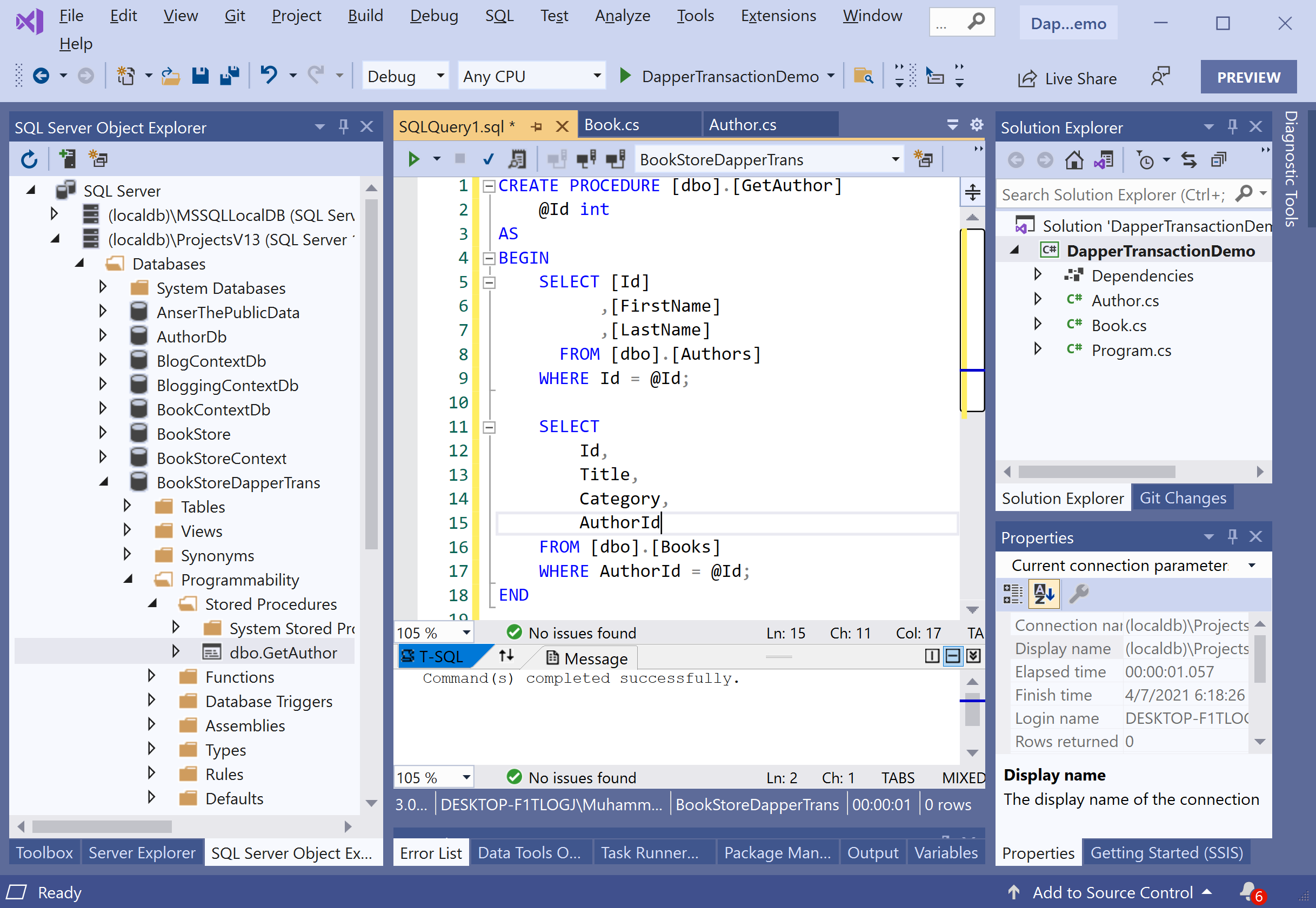Dapper Transaction Stored Procedures
So far, we have specified all of our SQL in code directly. But what if you want to use stored procedures for your data access layer? That is perfectly fine and Dapper.Transaction can work seamlessly with stored procedures.
Let's consider the following stored procedure.
CREATE PROCEDURE [dbo].[GetAuthor]
@Id int
AS
BEGIN
SELECT [Id]
,[FirstName]
,[LastName]
FROM [dbo].[Authors]
WHERE Id = @Id;
SELECT
Id,
Title,
Category,
AuthorId
FROM [dbo].[Books]
WHERE AuthorId = @Id;
END
Now execute the above-stored procedure in SQL Query editor.

Let's write a method to call the above-stored procedure. We will still use the QueryMultiple method just like we did before. Instead of specifying inline SQL with two different statements, we will specify the stored procedure's name and pass in an Id as a parameter.
private static Author GetAuthorAndTheirBooksSP(int id)
{
string sql = "GetAuthor";
using (IDbConnection connection = new SqlConnection(ConnectionString))
{
connection.Open();
using (var transaction = connection.BeginTransaction())
{
using (var results = transaction.QueryMultiple(sql, new { Id = id }, commandType: CommandType.StoredProcedure))
{
var author = results.Read<Author>().SingleOrDefault();
var books = results.Read<Book>().ToList();
if (author != null && books != null)
{
author.Books = books;
}
return author;
}
}
}
}
You also need to specify commandType: CommandType.StoredProcedure as a third parameter. You can see that it is almost identical to how we had it before.
Now call the GetAuthorAndTheirBooks method in the Main method.
static void Main(string[] args)
{
Author author = GetAuthorAndTheirBooksSP(2);
Console.WriteLine(author.FirstName + " " + author.LastName);
foreach (var book in author.Books)
{
Console.WriteLine("\t Title: {0} \t Category: {1}", book.Title, book.Category);
}
}
Let's execute the above code, and you will see the following output.
William Shakespeare
Title: Romeo and Juliet Category: Entertainment
Title: The Tempest Category: Fiction
Title: The Winter's Tale : Third Series Category: Fiction
